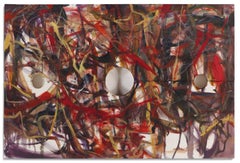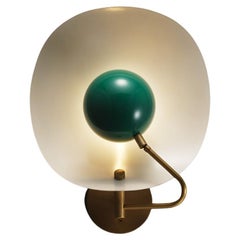Jordan Sokol
Mid-20th Century Abstract Abstract Sculptures
Bronze
Early 2000s Abstract Abstract Paintings
Oil
People Also Browsed
2010s American Mid-Century Modern Wall Lights and Sconces
Brass, Bronze, Enamel, Nickel
2010s American Modern Cabinets
Brass
21st Century and Contemporary Bergere Chairs
Linen
Antique 19th Century French Wardrobes and Armoires
2010s American Decorative Art
Limestone
Antique Late 19th Century Native American Native American Objects
Clay
20th Century English Tableware
Silver
21st Century and Contemporary Vietnamese George II Dry Bars
Wood
Mid-20th Century Italian Mid-Century Modern Musical Instruments
Metal
Vintage 1960s French Space Age Architectural Elements
Fiberglass
Early 2000s American Impressionist Landscape Paintings
Canvas, Oil
Early 20th Century Impressionist Landscape Paintings
Canvas, Oil
Venice Landscape Italian Oil on Canvas Painting in Gilt Wood Frame, Belle Epoque, Early 20th Century
Antique Early 19th Century French Charles X Architectural Elements
Stone, Copper
Early 20th Century French Louis XVI Bergere Chairs
Leather, Walnut
Vintage 1930s French Mid-Century Modern Club Chairs
Fruitwood
Antique Early 1900s German Rococo Dinner Plates
Porcelain
A Close Look at abstract Art
Beginning in the early 20th century, abstract art became a leading style of modernism. Rather than portray the world in a way that represented reality, as had been the dominating style of Western art in the previous centuries, abstract paintings, prints and sculptures are marked by a shift to geometric forms, gestural shapes and experimentation with color to express ideas, subject matter and scenes.
Although abstract art flourished in the early 1900s, propelled by movements like Fauvism and Cubism, it was rooted in the 19th century. In the 1840s, J.M.W. Turner emphasized light and motion for atmospheric paintings in which concrete details were blurred, and Paul Cézanne challenged traditional expectations of perspective in the 1890s.
Some of the earliest abstract artists — Wassily Kandinsky and Hilma af Klint — expanded on these breakthroughs while using vivid colors and forms to channel spiritual concepts. Painter Piet Mondrian, a Dutch pioneer of the art movement, explored geometric abstraction partly owing to his belief in Theosophy, which is grounded in a search for higher spiritual truths and embraces philosophers of the Renaissance period and medieval mystics. Black Square, a daringly simple 1913 work by Russian artist Kazimir Malevich, was a watershed statement on creating art that was free “from the dead weight of the real world,” as he later wrote.
Surrealism in the 1920s, led by artists such as Salvador Dalí, Meret Oppenheim and others, saw painters creating abstract pieces in order to connect to the subconscious. When Abstract Expressionism emerged in New York during the mid-20th century, it similarly centered on the process of creation, in which Helen Frankenthaler’s expressive “soak-stain” technique, Jackson Pollock’s drips of paint, and Mark Rothko’s planes of color were a radical new type of abstraction.
Conceptual art, Pop art, Hard-Edge painting and many other movements offered fresh approaches to abstraction that continued into the 21st century, with major contemporary artists now exploring it, including Anish Kapoor, Mark Bradford, El Anatsui and Julie Mehretu.
Find original abstract paintings, sculptures, prints and other art on 1stDibs.
Read More
Roberto Burle Marx’s Bold Brazilian Landscape Design Comes to New York
The New York Botanical Garden, in the Bronx, has mounted a multifaceted show honoring the polymath modernist's legacy, including new work by contemporary landscape maker Raymond Jungles.
Brooklyn Artist Angel Otero’s Abstract Works Tell a Unique Story about Art and Heritage
In his current show at New York's Lehmann Maupin gallery, the Puerto Rican–born talent reveals new paintings with a semiautobiographical aspect.



